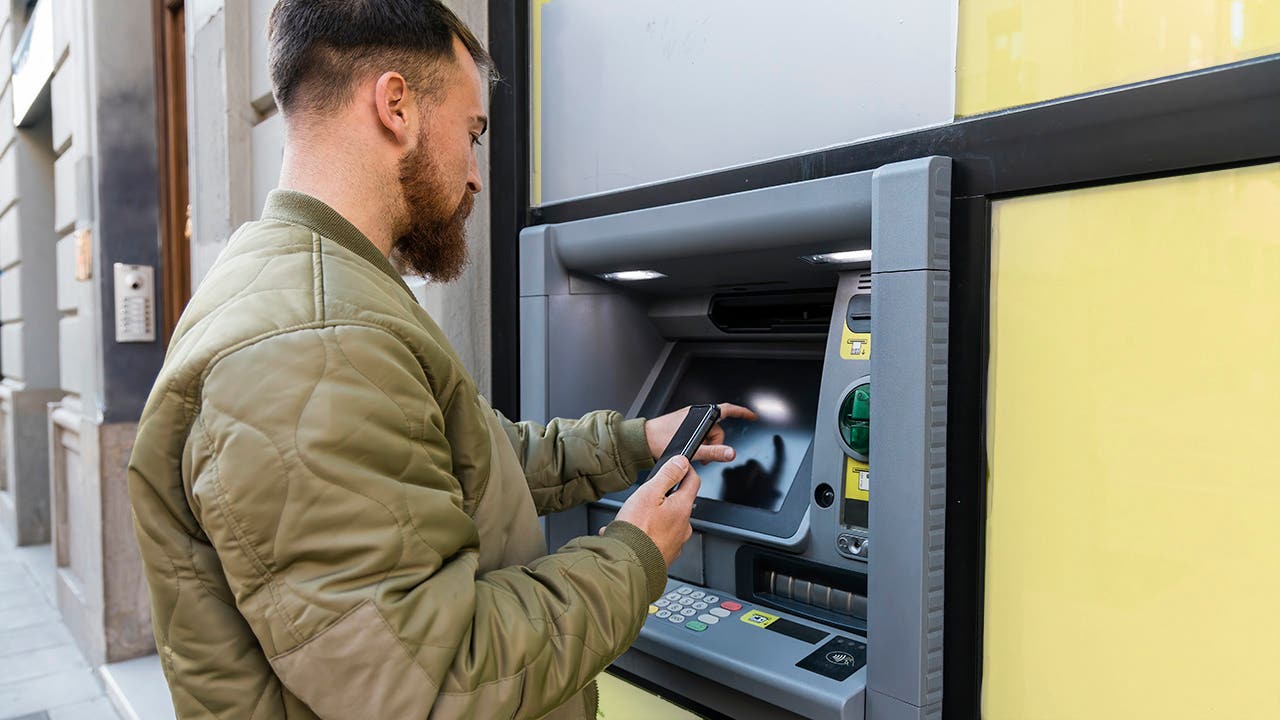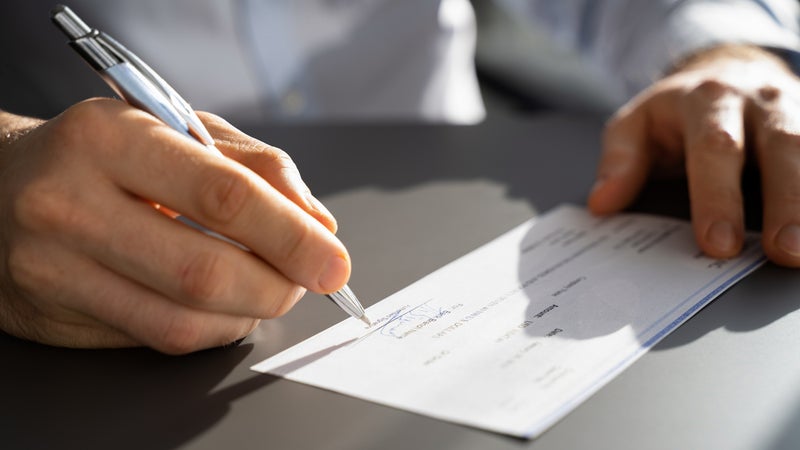Checking account fees: What they are and how to avoid them

The Bankrate promise
At Bankrate we strive to help you make smarter financial decisions. While we adhere to strict , this post may contain references to products from our partners. Here's an explanation for .
Key takeaways
- Checking account fees, such as overdraft, ATM and monthly service fees, can be costly, but there are ways to avoid them.
- The average overdraft fee is $26.61, according to Bankrate's 2023 checking and ATM fee study.
- Around 45 percent of checking accounts surveyed by Bankrate are listed as free checking accounts. So you should be able to find an account in which you don't need to pay a fee.
Checking account fees may be charged by banks when customers make certain transactions or fail to maintain a set minimum balance. These fees can add up, but fortunately many of them are also avoidable.
Checking account fees to watch out for include overdraft fees, ATM fees and monthly service fees. Here we’ll take a look at these fees in more depth, including the average amount banks charge for each and the best ways to avoid having to pay them.
Overdraft and NSF fees
Overdraft fees and nonsufficient funds (NSF) fees can be some of the most expensive bank fees.
Overdraft fees may be charged by a bank when it temporarily covers transactions that overdraw your account, thereby allowing them to take place. NSF fees may be imposed when the bank denies payments or the cashing of checks that would result in a negative balance.
The average overdraft fee is $26.61 and the average NSF fee is $19.94, according to Bankrate’s 2023 checking and ATM fee study. These fees are on the decline as banks face pressure from consumer advocates to curb them, yet fees for overdrafts are still imposed at 91 percent of bank accounts.
Here are some ways to avoid overdraft and NSF fees:
- Set up low-balance alerts. Many banks allow you to sign up for text alerts when your balance falls below a certain amount. Getting such a text may be enough to keep you from swiping your debit card to avoid overdrawing your account.
- Check your balance frequently. Check your bank app before you use your debit card. Seeing the balance may help you avoid overdrawing your account. However, be aware of transactions that aren’t yet pending, such as an upcoming subscription charge. Once they post, these transactions could cause an overdraft.
- Find an account that doesn’t charge overdraft fees. These include accounts from Capital One, Ally Bank and Alliant Credit Union, as well as those from neobanks like Chime, Current and Varo.
- Consider overdraft protection. Overdraft protection links a line of credit or a savings account to your checking account to cover overdrafts. You may pay a fee for the service, but it’s often cheaper than paying an overdraft fee.
- Federal regulations require banks to let customers opt out of overdraft on debit cards. For some people, having their debit card declined when they don’t have the money to cover a purchase is preferable to incurring a string of overdraft fees.
ATM fees
Using an ATM outside of your bank’s network could cost you both a surcharge from the owner of the ATM and a fee from your own financial institution. The total combined fee is an average of $4.73 in Bankrate’s latest study — the highest in the study’s history.
To avoid ATM fees, here are some steps you can take:
- Locate and use an in-network ATM. Many mobile banking apps have ATM locators that can help you find a nearby fee-free ATM.
- Get cash back at the register. As an alternative to an ATM, get cash back when you make a purchase at a drugstore, grocery store or other retailer
Monthly service fees
Service fees, or maintenance fees, are usually billed on a monthly basis. Often, a bank will waive this fee if you keep at least a set minimum balance in your account. Among noninterest checking accounts that charge this fee, the average is $5.31, according to Bankrate’s 2023 study — which reflects a 2 percent decrease from last year.
Less than half (45 percent) of noninterest checking accounts don’t have a minimum balance requirement or a monthly maintenance fee, according to Bankrate’s 2023 checking account and ATM fee study.
Here are some ways to avoid monthly service fees:
- Find a bank that doesn’t charge service fees. Online banks are a good place to start looking for accounts that don’t have a monthly service fee.
- Service fees may be avoided by using direct deposit. Some banks allow you to waive the fee with a direct deposit into your account every monthly statement cycle. The direct deposit may have to meet or exceed a certain amount.
- They may also be avoided by using your debit card. You might be able to waive the monthly maintenance fee by using your debit card a certain minimum number of times during the monthly statement cycle.
Why are some checking account fees rising?
Fees tend to rise just like the cost of other goods and services. Like any business, a bank may try to generate revenue through fee increases — especially in a low-rate environment.
“Volatile interest rates in the past two decades have led banks to a greater reliance on fee income which can be more stable than interest income from lending,” says Greg McBride, CFA, Bankrate chief financial analyst. “Entire business lines such as wealth management can provide a steady stream of non-interest income for financial institutions. Higher monthly account maintenance fees, higher balances to avoid the fees, and increasing ATM fees are examples that checking account customers may confront.”
The best checking accounts don’t charge maintenance fees and or require a minimum balance. In all, 99 percent of noninterest checking accounts either don’t charge a fee or have one that’s easy to avoid, such as by meeting a direct deposit requirement.
Bottom line
Having a checking account that charges you absolutely no fees is often possible, especially when you know what it takes to avoid charges for account maintenance, ATM use and overdrafts.
— Bankrate’s Karen Bennett contributed to an update of this story.



